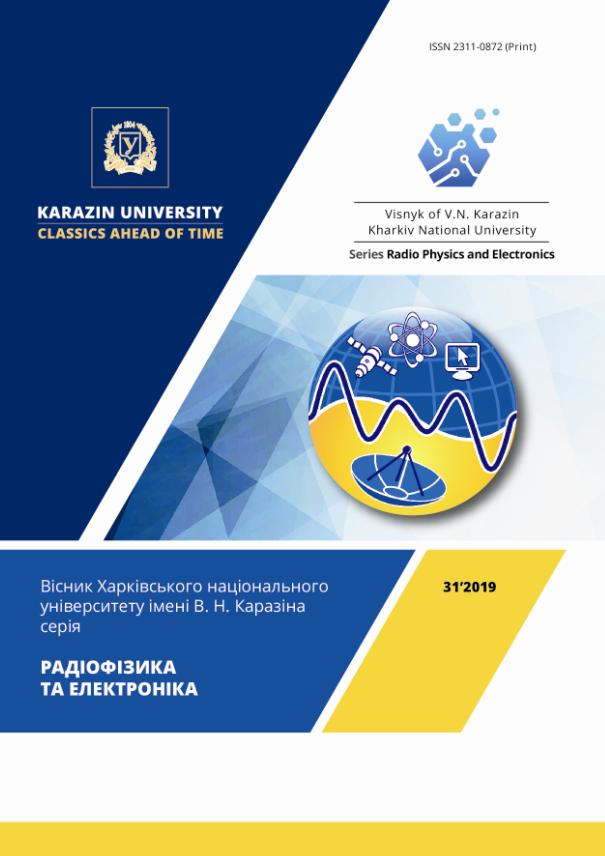Impulse antenna based non-uniform conical line
Abstract
Background. Today it is important to design small-scale antennas that operate efficiently over a wide frequency range to create modern electronic systems. Such antennas will come in a number of useful applications in both modern telecommunications and radar systems for various purposes. It is known that the cutoff frequency depends on the antenna size so the task of miniaturizing the antenna can be considered as follows: for a given antenna size, you must create a design for which the cutoff frequency will be the lowest
Objectives. The purpose of the work is to offer the design of a biconical antenna, which will provide efficient radiation of an electromagnetic wave at low frequencies. To analyze the dependence of the radiated power on the wavelength for various antenna configurations.
Materials and methods. The paper investigates the modification of a biconical antenna, which is an irregular conical line with a dielectric. As a method of calculating radiation in the near zone of the antenna, the finite time difference method in the spherical coordinate system (spherical FDTD) which is adapted for the axially symmetric case is used. To calculate the fields in the far zone, we used the transition from the near zone to the far zone (Near to Far Transformation N2F) in the frequency domain.
Results. The radiation of a biconical antenna in a pulsed mode is considered. The ordinary construction of a biconical antenna and its other construction (a “capacitive type” biconical antenna) are investigated. The emitted by the antenna power at different frequencies was investigated. Antenna radiation at low and high frequencies was analyzed.
Conclusions. It is shown that in the antenna of the “capacitive type” the critical frequency of the modes decreases and their conversion to the dipole mode of free space is more efficient. It is shown that the biconical antenna of the “capacitive type” efficiently emits electromagnetic energy at low frequencies and it can be used to create small antennas.
Downloads
References
Shantz H. The art and science of ultrawideband antennas. Boston: Artech House; 2005. 331 p.
Legenkiy MN, Butrym AYu, Sharkova MS. About possibility to create a small antenna based on inhomogeneous biconical line. Proc. of the conference MSMW2013. 2013. P. 470-472.
Kochetov BA, Butrym AYu. Axially symmetric transient electromagnetic fields in a radially inhomogeneous transmission line. Progress in Electromagnetic Research B. 2013;48:375-394.
Kim OS, Breinbjerg O. Miniaturized self-resonant split-ring resonator antenna. Electronics Letters. 2009;45(4):196-197.
Mongia RK, Bhartia P. Dielectric resonator antennas – A review and general design relations for resonant frequency and bandwidth. International Journal of Microwave and Millimeter-Wave Computer-Aided Engineering; 1994;4(3):230-247.
Galejs J. Capacitor type biconical antenna. Radio Science Journal of Research NBS/USNC - URSI. 1964;68D(2):166-172.
Franek O, Pedersen GF, Andersen JB. Numerical modeling of a spherical array of monopoles using FDTD method. IEEE Transactions on Antennas and Propagations. 2006;54(7):1952-1963.
Taflove A, Hagness S. Computational electrodynamics: the finite-difference time-domain method. Boston: Artech House; 2005. 1025 p.
Teixeira FL, Chew WS. Systematic derivation of anisotropic PML absorbing media in cylindrical and spherical coordinate. Microwave and Guided Wave Letters. 1997;7(11):371-373.




